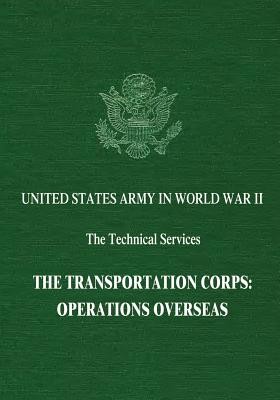
- We will send in 10–14 business days.
- Author: Harold Larson
- Publisher: CreateSpace Independent Publishing Platform
- ISBN-10: 1514855879
- ISBN-13: 9781514855874
- Format: 17.8 x 25.4 x 3.6 cm, minkšti viršeliai
- Language: English
- SAVE -10% with code: EXTRA
Reviews
Description
The transportation of troops and supplies to build up and maintain the force of more than five million soldiers deployed overseas by the United States Army in World War II involved operations of unprecedented magnitude and complexity, both across the oceans and within the military theaters of the war. The movement of supplies for allied forces greatly increased the Army's transportation task. The two preceding volumes of this group have told the story of Army transportation in the continental United States. This volume deals with land and water movements in theaters of operations around the world. It surveys port, railway, highway, and water operations that constituted a major, and in some instances a controlling, factor in the prosecution of the war. Time and again the Army's experience during the war underlined the need for clearly recognizing the importance of transportation in planning and executing tactical as well as logistical operations. After the creation of the Transportation Corps in July 1942, transportation activities overseas became increasingly its concern and were carried out in ever-widening measure by staff officers and units provided by the Corps to overseas theaters. The focus of this volume is nevertheless on Army transportation problems and activities as a whole, since other services also had a very large hand in moving troops and supplies within the theaters. The authors have told their story from the records and the points of view both of the oversea commands and of the Transportation Corps in Washington. If it is at times a story of inadequate performance, primarily because of shortages of trained men and suitable equipment, it is also a story of over-all success in delivering the men and the goods when and where they were needed to defeat the enemy.
EXTRA 10 % discount with code: EXTRA
The promotion ends in 21d.16:09:40
The discount code is valid when purchasing from 10 €. Discounts do not stack.
- Author: Harold Larson
- Publisher: CreateSpace Independent Publishing Platform
- ISBN-10: 1514855879
- ISBN-13: 9781514855874
- Format: 17.8 x 25.4 x 3.6 cm, minkšti viršeliai
- Language: English English
The transportation of troops and supplies to build up and maintain the force of more than five million soldiers deployed overseas by the United States Army in World War II involved operations of unprecedented magnitude and complexity, both across the oceans and within the military theaters of the war. The movement of supplies for allied forces greatly increased the Army's transportation task. The two preceding volumes of this group have told the story of Army transportation in the continental United States. This volume deals with land and water movements in theaters of operations around the world. It surveys port, railway, highway, and water operations that constituted a major, and in some instances a controlling, factor in the prosecution of the war. Time and again the Army's experience during the war underlined the need for clearly recognizing the importance of transportation in planning and executing tactical as well as logistical operations. After the creation of the Transportation Corps in July 1942, transportation activities overseas became increasingly its concern and were carried out in ever-widening measure by staff officers and units provided by the Corps to overseas theaters. The focus of this volume is nevertheless on Army transportation problems and activities as a whole, since other services also had a very large hand in moving troops and supplies within the theaters. The authors have told their story from the records and the points of view both of the oversea commands and of the Transportation Corps in Washington. If it is at times a story of inadequate performance, primarily because of shortages of trained men and suitable equipment, it is also a story of over-all success in delivering the men and the goods when and where they were needed to defeat the enemy.


Reviews